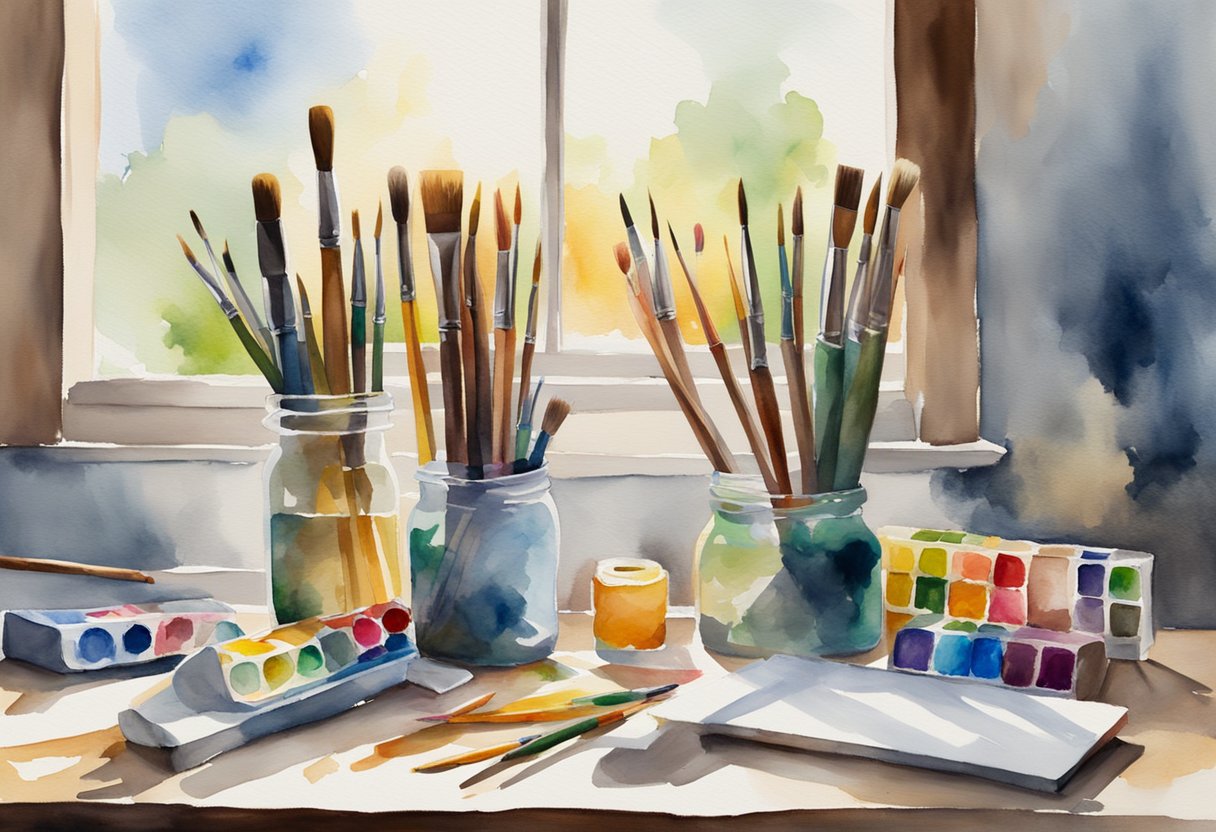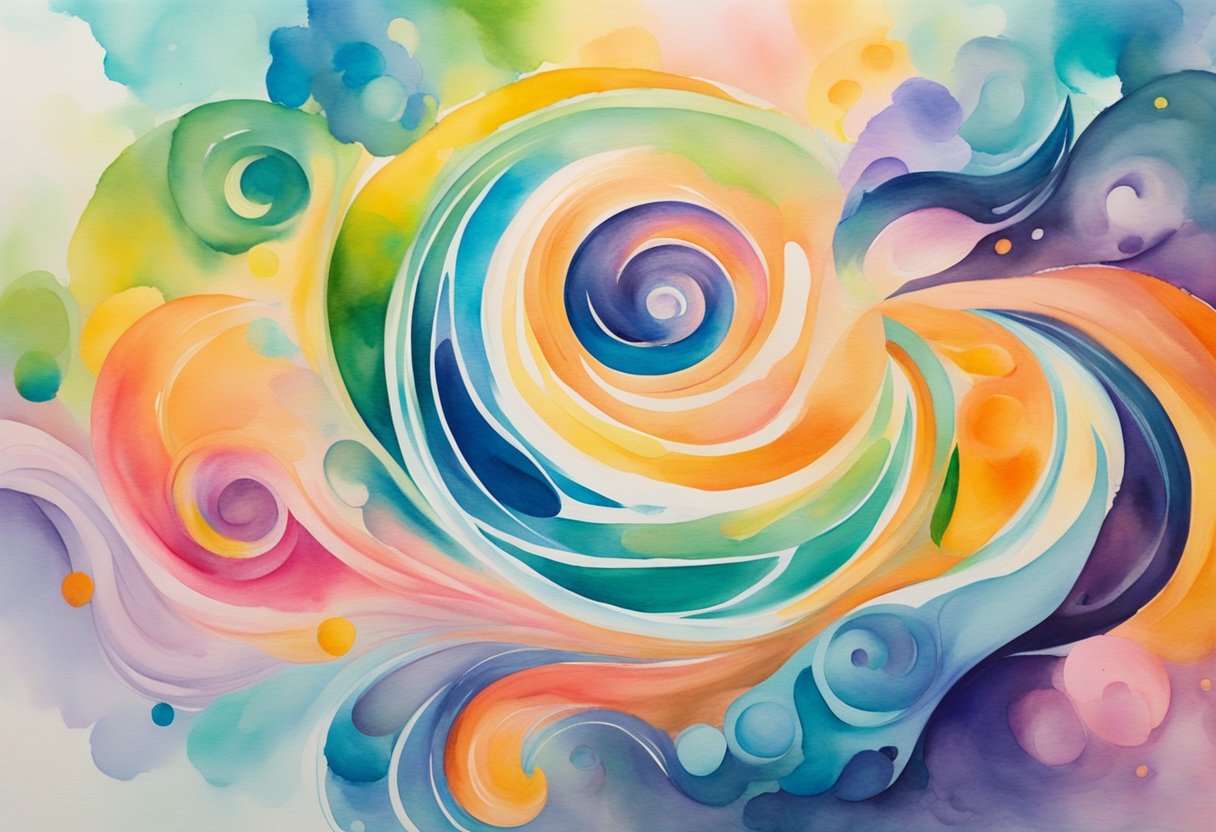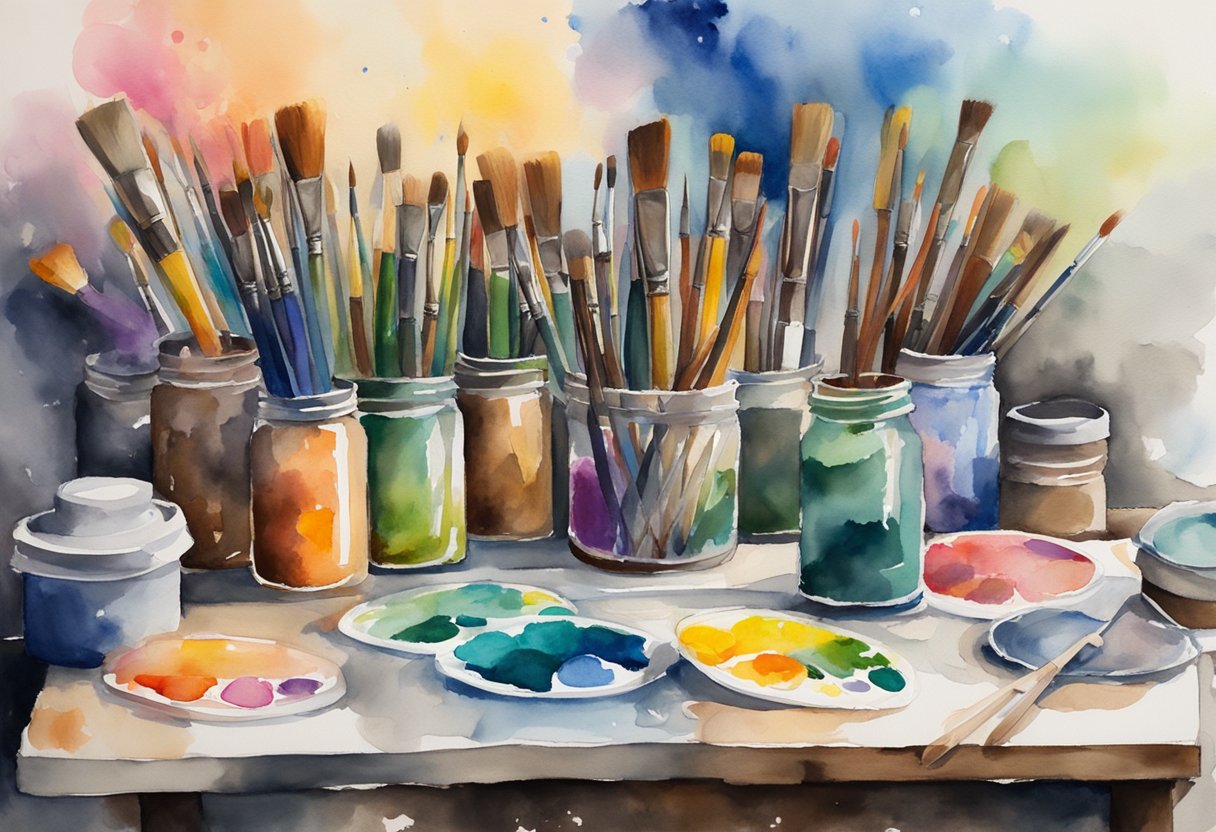Unleashing Creativity Across Mediums

Artistic expression serves as a conduit for individuals to communicate thoughts, emotions, and concepts that transcend everyday language. It occupies a unique space where mediums such as paint, clay, music, or written word become the instruments through which artists convey their inner experiences.
Across various cultures and epochs, this form of expression has played a pivotal role in shaping societies by allowing a glimpse into the human psyche and the emotional landscapes that define our shared humanity.
Examining artistic expression opens doors to a deeper understanding of both the creator and the observer. While artists harness their craft to manifest personal emotions or critique societal norms, the audience engages with Art to reflect on their feelings and experiences.
This dynamic interaction not only bridges gaps between individuals but can also catalyze personal growth and social change. Art’s ability to encapsulate complex layers of human experience makes it an enduring and vital facet of cultural expression.
Key Takeaways
- Artistic expression communicates complex human emotions beyond conventional language.
- It fosters a deep connection between artists and observers, facilitating personal and societal reflection.
- Engaging with Art promotes growth and can inspire transformative change in communities.
The Essence of Artistic Expression
Artistic expression is humanity’s universal language, capturing the vast scope of human experience and emotion. It spans an array of forms and mediums, each with the power to reveal the artist’s deepest self-expression.
Defining Artistic Expression
Artistic expression manifests an artist’s thoughts, emotions, or ideas through various forms, such as painting, sculpture, or literature. At its core, it is about conveying to others what may be inexpressible in words—capturing the intangible qualities of feeling and experience. Vincent van Gogh, for instance, utilized bold colors and dramatic brush strokes to imbue his works with intense emotional resonance.
Forms and Mediums
- Painting and Sculpture: Traditionally, fine Art has been associated with painting and sculpture, form and line, creating beauty and meaning. Expressionism, a movement that emphasizes the expression of emotional experience rather than physical reality, is a prime example, with Van Gogh being one of its forerunners.
- Literature and Architecture: In literature, words construct narratives that explore the depths of human psychology and social commentary—much like how architecture uses space and structure to reflect cultural values.
- Modern and Contemporary Art: Abstraction and modern Art have pushed boundaries beyond naturalism, giving rise to movements such as fauvism and abstract expressionism, prioritizing color, shape, and composition over direct representation.
- Creative Art Beyond Visual: Artistic expression extends to mediums like music, dance, and performance, highlighting the diversity in ways self-expression and creativity can take shape.
Through these mediums, artists create a bridge between personal and collective experiences, allowing for a dialogue that speaks to all facets of human nature.
Historical Perspectives and Art Movements
Art movements have been central to the evolution of artistic expression, with individual artists playing pivotal roles in shaping the contours of artistic styles.
Evolution of Artistic Styles
Art has progressed through myriad stages, reflecting social changes and intellectual movements. Romantic Art surfaced in the late 18th century as a reaction against the rationality of the Enlightenment, emphasizing emotion and individualism. As industrialization transformed European societies, artistic conventions broke, paving the way for expressionism, which sought to depict subjective experiences rather than objective reality.
German Expressionists like Ernst Ludwig Kirchner used vivid colors and dynamic compositions to communicate feelings, while Edvard Munch captured deep psychological undercurrents. Modern artists continued this trend after World War I, dramatically diverging from classical techniques.
- Romanticism: Emphasized nature and the individual.
- Expressionism: Focused on subjective experience
- Modern Art: Broke away from traditional aesthetics
Key Artists and Their Impact
Pablo Picasso stands as a colossus in the narrative of artistic creation. His innovative approach to form and perspective gave rise to Cubism, which dissected objects into abstract forms. Picasso’s influence echoes through the works of numerous modern artists, who took cues from his defiance of traditional representation. Philosopher Benedetto Croce articulated that Art’s value lies not in utility but in expression and intuition – a principle reflected in Picasso’s prodigious body of work.
- Pablo Picasso: Spearheaded Cubism, influencing subsequent art movements
- Benedetto Croce: Advocated for Art as an expression of intuition and feeling
The Psychology of Art
The study of Art’s psychological aspects focuses on how artistic creativity impacts mood and facilitates emotional processing within individuals.
Art and Emotion
Art harnesses the power to evoke and express a vast range of emotions. It plays a crucial role in how individuals connect to their feelings and communicate them to an audience. Emotions conveyed through Art can profoundly impact the viewer’s mental state and mood as they tap into sensations that may be complex or difficult to articulate in words. This expressiveness bridges the creator and the observer, allowing for profound interpretation and perception.
The Art as a Path to Emotion article highlights Art’s psychological healing aspects, emphasizing its emotional resonance both with the creator and the viewers.
Art as Therapy
Art therapy presents a method for exploring and dealing with emotions, including distressing experiences like fear. This form of therapy aids individuals in processing their feelings through creative expression, which can be particularly beneficial for those who find verbal communication challenging. It offers a non-verbal communication channel that can be insightful and healing.
For men who have faced health battles, such as surviving lymphoma cancer, Art can serve as a powerful tool for navigating the complex emotions associated with their journey and improving their overall mental state.
The Psychology of Artistic Expression: Verbal vs. Visual discusses the intersection between different artistic expressions and their psychological implications.
Artistic Expression in Literature and Writing

Artistic expression in literature and writing often allows creators to convey their deepest thoughts and feelings. Through the precision of words, writers craft worlds and emotions, allowing readers to experience the spectrum of the human condition.
Poetry and Prose
Poetry is a distinct form of writing where the economy of language and potent imagery evoke the intangible emotions and thoughts of the author. It allows for a dense layer of meaning in a compact form. Metaphors and rhymes in poems like William Blake’s works introduce readers to profound notions of fantasy and reality, letting them glimpse into the poet’s soul.
Prose, on the other hand, provides a broader canvas. It includes genres such as narratives and dramas, where the intricacies of story and characters create a tapestry of human experiences. Whether in a novel or short story, prose invites readers into fictional realms or delivers poignant truths about society.
Narrative and Storytelling
Narrative and storytelling pivot on the structure of a tale and its delivery. A strong narrative immerses the audience in the plot, maintaining engagement from beginning to end. Examples include multilayered epics where heroes face tragedy and triumph, often echoing the resilience one may find in surviving life-threatening conditions like cancer.
Storytelling, as an art, conveys a message in an impactful way. It might weave elements of self-expression or fantasy to illustrate complex human emotions related to personal trials, such as overcoming health challenges that define and refine a person’s perspective on life.
Through literature and writing, individuals find a platform to channel their experiences, crafting narratives that resonate and support others facing similar journeys.
Visual Art and Its Language

Visual Art communicates a rich language through its diverse forms and elements, inviting one to explore its composition and hidden symbolism.
Understanding Composition and Aesthetics
Art’s arrangement of visual elements constitutes its composition, a foundation crucial to every effective piece of visual Art. Artists leverage form, color, shape, space, and texture to create a harmonious balance that pleases the eye and evokes emotions. In painting and drawing, these formal elements define aesthetics and influence how a viewer perceives the artwork.
- Balance and harmony are achieved when the components of an artwork feel equally weighted and cohesive.
- Composition refers to the organization of these elements, which can direct the viewer’s attention and create a narrative within the artwork.
For instance, an artist might use color contrasts to create depth or highlight a particular work area. Deliberate distortion of form often contributes to the personal expression in an artwork, creating a unique visual language that may reflect the artist’s experiences with life’s adversities, akin to the resilience found in those who have faced challenges such as lymphoma cancer.
Decoding Symbolism in Art
Symbolism in Visual Art offers a deeper layer of understanding, allowing one to unveil the emotions and messages encrypted within the visuals. Through the strategic use of color and representation, artists infuse their works with meaning transcending the literal.
- Colors carry intrinsic associations with emotions and ideas; for instance, blue might convey tranquility or sadness.
- Shapes and symbols can serve as metaphors, resonating with shared cultural meanings or representing personal experiences.
Artists often use symbolism to address complex themes, subtly offering comfort or sharing solidarity with viewers who might discern the underlying messages. This is vital for individuals who have navigated life-altering experiences and seek connection through shared visual languages. Art becomes a form of non-verbal communication that yields solace and understanding, much like the supportive gestures in communities, where experiences with diseases like cancer unite individuals in shared resilience.
Interpreting Artistic Expression

In Art, interpretation bridges the gap between creation and reception, infusing works with layered meanings that reflect intrinsic aesthetics and provoke critical discourse.
Art Criticism and Theory
Art criticism leverages a blend of knowledge and theory to decode the multifaceted language of Art. Critics engage with works to elucidate the intricacies of creation, assessing aesthetics, value, and expression theory. They dissect the ontology of a piece—its very being and essence—with an eye for the artist’s technique and message. This critical examination aids audiences in uncovering the latent depths of artistic communication.
- Knowledge: Critiques bolster appreciation through informed insights.
- Theory: Guides understanding of Art’s diverse contexts and purposes.
The Viewer’s Role
Interpretation in Art is never passive; it calls for an audience’s active participation. Viewers bring personal experiences to their interpretations, making meaning from the sensory and emotional stimuli before them. Like a co-author, each person reconstructs the narrative of the artwork through their lens, often aligning with or diverging from the artist’s original intent.
- Creation Interpretation: A subjective blend of the artist’s message and individual perception.
- Ontology Examination: A quest to grasp an artwork’s essence and being.
Artistic Expression in Performance

Illuminating the human experience through live art forms such as dance and music creates a dialogue between performers and their audience, allowing a deeply personal but universally understandable expression of emotion.
Dance and Movement
Dance is a canvas for physical storytelling, where every gesture and step communicates aspects of the human condition. Harmony in movement often mirrors inner mood or mental state, becoming a visible representation of expressivity and emotion. Whether it is the synchronization found in ballet or the spontaneous kinetics of street dance, each style conveys a creator’s artistic style and drama to connect with observers in a shared space.
Music and Sonic Art
Music, a sonic art, transcends language barriers with its capacity for expression and communication. The layering of sounds- from the gentle strumming of a guitar to an orchestra’s robust brass- establishes an ambiance and provokes emotion. Creativity blooms in the composition and performance, reflecting an artist’s intent and often revealing the intricate mental state. The interaction between the musicians and their audience fosters a communal experience that encapsulates the essence of artistic expression in performance.
Final Thoughts on Artistic Expression

Creative pursuits have shown potential as a source of solace and strength, particularly for individuals grappling with serious health challenges. They often serve as an outlet to channel emotions and experiences, crafting something tangible from the intangible whirl of feelings.
For men who have faced the arduous journey of battling lymphoma, the act of creating can become a haven, providing a semblance of control in the chaos of recovery.
Art, in all its forms—painting, sculpture, or music—speaks to the core of one’s being. It’s a hobby and a companion through the highs and lows. Expressed effectively through visual or auditory mediums, artistic expression allows for a release of the emotional burden, fostering healing from within. It is a testament to many survivors’ resilience and unyielding spirit.
Strength emanates from the shared experiences represented in each brushstroke or chiseled contour, resonating with fellow survivors and offering solidarity. This expression becomes a beacon, illuminating the path toward well-being and encouraging a collective stride forward.
Through creating, they reconnect with their essence beyond the illness, reconstructing identity and reclaiming a zest for life. As they navigate their unique paths to recovery, the transformative power of Art remains a steadfast ally: a source of renewal and a canvas for the stories of perseverance that define them.
Each piece, a conversation, every note, a step towards harmony. Such is the subtle yet profound impact of artistic expression in the healing journey. -T
Frequently Asked Questions
Uncovering the nuances of artistic expression allows us to witness the varied manifestations of human creativity across different mediums. Each form, from music to literature, opens a window into artists’ emotional and intellectual landscapes.
What constitutes artistic expression within different musical genres?
Musical genres define their essence through unique rhythm, melody, and lyric combinations. Classical music often weaves complex emotional narratives without words, whereas jazz might capture spontaneity through improvisation.
How is dance used as a form of artistic expression?
Dance transforms emotion and story into physical movement, visually representing feelings. Ballet’s structured elegance can narrate stories, while modern dance often breaks conventions to push boundaries of expression.
In what ways do artists utilize drawing to convey emotions and ideas?
Artists employ lines, contrasts, and colors in drawings to encapsulate feelings and concepts, crafting visuals that can range from subtle to vividly intense. This visual language articulates what may be inexpressible in words.
Can you provide famous quotes that relate to the concept of artistic expression?
Vincent Van Gogh once said, “I dream my painting, and I paint my dream,” revealing Art’s capacity to manifest one’s innermost thoughts. Pablo Picasso also noted, “Art washes away from the soul the dust of everyday life,” showing its transformative power.
How is artistic expression manifested in literature?
Literature weaves a tapestry of words to evoke emotions, critique society, and explore human conditions. With its meter and metaphor, poetry compresses vast meanings into concise phrases, while prose might explore themes through detailed narratives.
What distinguishes creative expression from artistic expression?
Artistic expression is often a deliberate, refined channeling of creativity into a medium that invites aesthetic appreciation. In contrast, creative expression might represent a broader, more informal exploration of imagination and innovative ideas.
